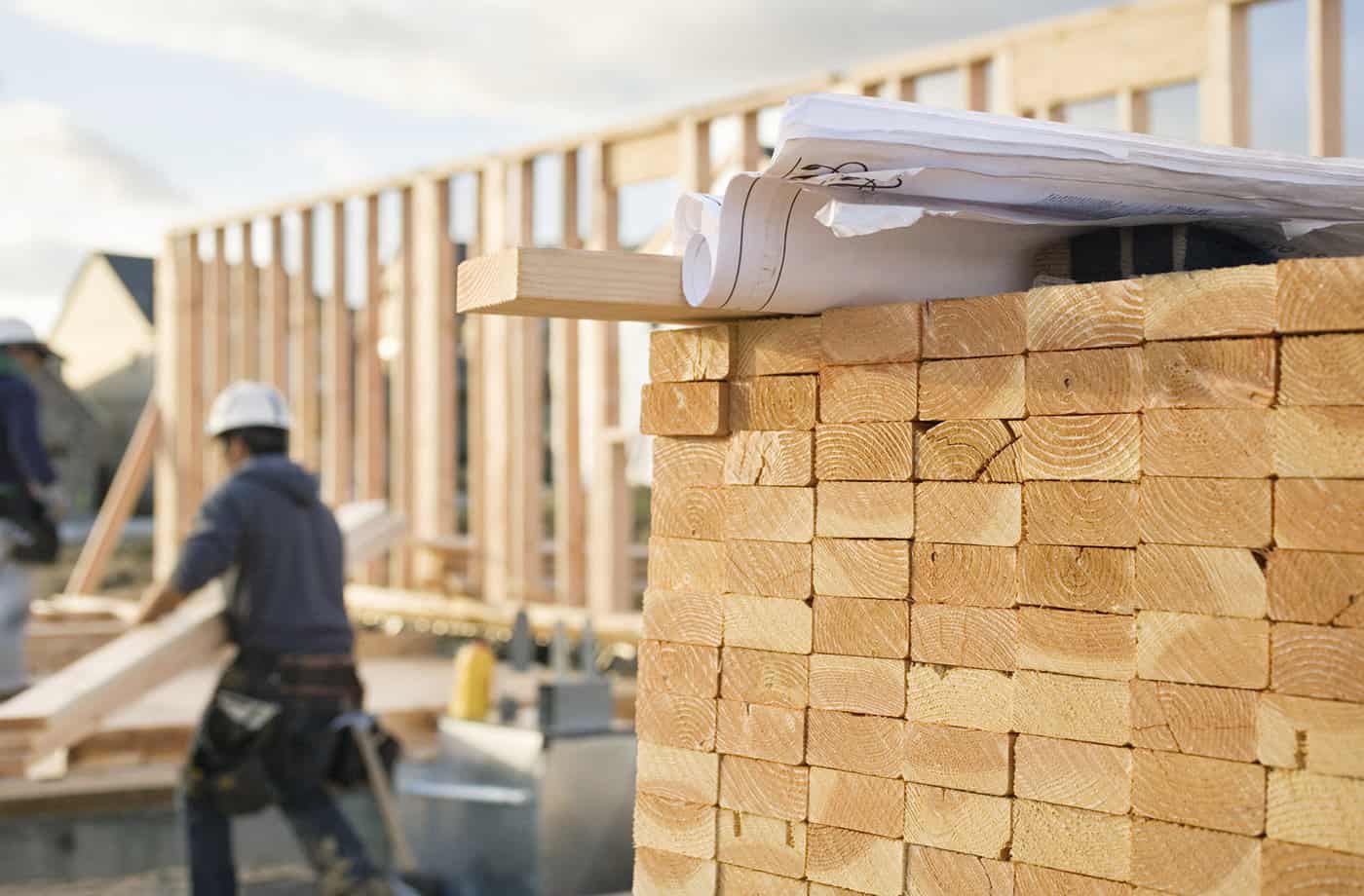
Wood construction, a sector with a future
3 minutes of reading
Wood construction is currently gaining ground in all construction sectors. And this is only the beginning! In the context of decarbonisation of the building sector, the RE2020 is bringing bio-sourced materials to the forefront. Let’s take a look at a flourishing sector.

A sector structured by economic and political players
In February 2021, the forestry and wood industry, with the support of its partners such as France Bois-Forêt, France Bois Industrie Entreprise and Fibois France, announced the development of a “Wood-Construction ambition plan 2030”. One year on, this plan is taking shape, with 23 proposals to enhance the value of wood in construction with a view to achieving the goal of carbon neutrality by 2050. In France, wood is recognised as a strategic sector by the government. As a renewable, bio-sourced material with carbon storage and capture capabilities, it is emerging as the cornerstone of the ecological transition. While the wood industry is expanding beyond the construction sector to include furniture, packaging and energy, legislation is emerging to support its development. Already in 2020, the State and the Ministry of Ecological Transition were working on a new regulation, RE2020, which came into force on 1 January 2022. This regulation is based on three main areas: improving the energy performance and reducing the consumption of new buildings; reducing the impact of new buildings on the climate by taking into account all the building’s emissions throughout its life cycle; and finally, ensuring that occupants have access to a living and working environment that is adapted to future climatic conditions (particularly heat waves). These government directives have a strong influence on the wood and forestry sector, enhancing its value and encouraging its development. This sector is not to be outdone, already accounting for 12.5% of manufacturing jobs in France and recording 26 billion euros of added value for a figure of 60 billion euros per year.A sector subject to specific conditions
Nevertheless, although the sector is promising and appears to be growing, there are still obstacles inherent to the material used. In effect, not all wood can be used in the construction sector. There are two categories: hard woods, thousands of which are found in France, and soft woods, which are used by companies for construction. In January 2022, at a conference organised by Fibois Île-de-France and the Union des Industriels et Constructeurs Bois, the issue of hard woods was once again discussed. The speakers stressed the importance of developing a downstream market to absorb the processing of hard woods, which is becoming increasingly democratic thanks to technological innovations. In the Greater Paris region in particular, 80% of the forest is made up of hard woods, hence the need to offer varied and qualitative outlets. Some players are working in this direction, such as Epamarne, a public developer committed to building 1,000 wood-built housing units per year, thereby supporting the emergence of a French and regional hard wood sector through its operations. A second obstacle is the position of France, and more broadly of Europe, with regard to trade in the wood sector. Although France has the fourth largest forest area in the European Union (17.2 million hectares), it continues to export a large amount of raw wood and to import a large amount of processed wood, particularly from China. There are several reasons for this paradox. On the one hand, there is the lack of downstream outlets, and on the other, the fragmentation of French forests with the scattering of private owners, making them more difficult to access. According to the FAO1, France imports 1.44 million m3 of round wood, mainly from European countries but also from Russia and China. However, these figures should be qualified, since a large proportion of French imports are in the form of finished or unassembled products (mainly furniture). These imports of wood-based products add to an already major balance for this material. The question of where the wood comes from also arises, since France was the European Union’s largest importer of tropical wood in 2016 (22.7% of total European consumption). However, this wood is not handled in accordance with European standards and may, in some cases, come from deforested areas.Reorganising the business
This half-hearted development of the wood sector in France implies a major restructuring of the business. With the “Wood-Construction Ambition Plan 2030”, players in the sector are aiming for a market share of 20 to 30% by 2030, i.e. between 4 and 5 times the current share. This development is supported by economic and institutional players who are increasingly focusing on this sector. For the 2024 Olympic Games, for example, the Athletes’ Village, with 260,000 m² to be built, will be 50% made of wood. France Bois 2024, a collective action structured for this occasion, aims to use 50% of French wood species processed in France, in short circuit mode. The Forest and Wood Conference, which ended on 16 March 2022, was the meeting place for the beginning of the year, enabling reflection on the issues affecting the sector: ecological transition, protection of biodiversity and industrial competitiveness. With the BR 2020, the demand for bio-sourced wood materials is increasing and the sector must organise itself to meet this demand. With regard to downstream outlets, Bouygues Bâtiment France Europe, with Wewood, is seeking to become a major player in the sector, with a target of 30% of wood projects by 2030. With its offer for the tertiary sector, particularly for offices and health care, many projects are being added to the 150 already completed in recent years.More reading
Read also




What lies ahead? 7 megatrends and their influence on construction, real estate and urban development
Article
20 minutes of reading

